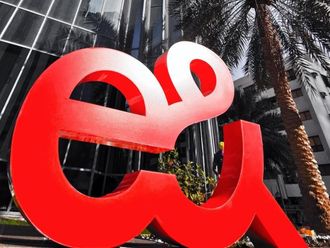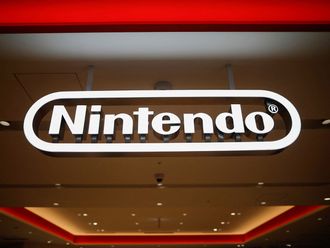
Dubai: BlackBerry’s first Android device — Priv — is one of the biggest miracles to happen this year in the smartphone industry.
The word ‘Priv’ stands for ‘Privacy and Privilege’ and the final result is an excellent hardware, excellent software and the best content ecosystems on the market. Priv does not have a premium look but is the most powerful and feature-packed phone BlackBerry has ever released.
Many of the app developers have migrated from BB10 to either iOS or Android, and that is where the money is, so BlackBerry has no choice but only for Android.
BlackBerry should have moved to Android two years ago and it is bit too late as the market is crowded and most of the developed markets are getting saturated.
Priv stands out from the crowd as it has a physical QWERTY keyboard apart from the virtual keyboard.
The device is similar to Samsung’s Galaxy S6 Edge with curved edges on the sides of the screen but it is wider. It weighs 192 grams.
Even though it is large, it stands in the hand firmly as the back of the device is a rubberised Kevlar-style material.
The 5.4-inch curved AMOLED display, with a resolution of 2560 x 1440 pixels, has 540 pixels per inch density compared to Apple 6’s 326 pixels per inch and Samsung S6’s 577 ppi.
The display looks amazing from any angles, sharp text and colours pop out of the screen. The screen is Gorilla Glass 4.
The device is powered by hexa-core 64-bit 1.8GHz Qualcomm Snapdragon 808 (dual-core 1.8GHz Cortex-A57 and quad-core 1.44GHz Cortex-A53) processor coupled with 3GB of RAM and 32 of internal storage capacity.
It runs on stock Android Lollipop operating system and Blackberry has injected a lot of modifications on the device
The device has a microSD slot to support up to 2TB of additional internal capacity.
The microSD and SIM tray sit on top of the device while the power/unlock key is located on the left and volume rocker on the right.
The device can be woken up either by double-tapping on the display or by sliding the display up.
To access the virtual keyboard also, the display has to be pushed up and it is smooth.
The QWERTY physical keyboard has been a staple of BlackBerry handsets since day one and it is very sturdy. It is decent and the keys are cramped for large thumbs like mine. It is not as precise as in Passport but has a good feedback. The keyboard is also touch-sensitive, supporting swipes for additional navigation options like scrolling left of right to move the screen of up or down.
Double tap lightly on the keyboard and it’ll serve as a trackpad, so you can quickly move a cursor around a document or message you’re editing.
The touch-enabled four-row backlit physical keyboard and the virtual keyboard offers contextual auto-correction, next-word prediction and a personalised learning engine that gets to know the way you type.
Users can create shortcut keys for their favourite apps from the physical keyboard like T for Twitter and F for Facebook by long pressing the T and F keys and assigning the apps.
This device is good for Blackberry fans that are used to the physical keyboard and also for Android fans that are used to the on-screen keyboard.
BlackBerry Hub lets users see their email, SMS, calendar, phone calls and social media at a glance.
The BlackBerry productivity Tab which sits on the right side of the curved screen and can be accessed from any screen has a calendar, task list, BlackBerry Hub and contacts list. It is handy but it takes time to get used to it.
BlackBerry’s home screen lets users swipe up on any icon to show a relevant widget, and users can also swipe up from the home button to get to one of three customisable shortcuts — device search, Google and BBM.
If you don’t like any of the BlackBerry’s features, you can install Google Now Launcher and it will turn into more Googlely and a plain Android phone.
The notification panel has a little bar that lets you filter by app. BlackBerry even resurfaced all of Android’s neat little shortcuts that let you have one-tap access to composing messages or getting directions home.
BlackBerry has taken security to a new level with this device and comes with DTEK app which monitors and reports on application access to apps, enabling users to be confident that their personal data is being kept private. Security is supported at the kernel, firmware, OS and the apps level.
The 18MP Schneider-Kreuznach-certified imaging camera with 1/2.4 sensor size, comes with dual LED flash lights, optical image stabilisation (OIS), phase-detect and autofocus and takes good photos and there are plenty of effects but only a few models like video, camera and Panorama. HDR is Auto capable. Not much manual control is available either, aside from the ability to change the exposure compensation.
Pictures in bright light look quite good with adequate colour saturation and a bit of a boost in HDR mode, but lower light situations really show the flaws. Processing is a little too aggressive, so lowlight photos tend to look really smudgy and colours look washed out. It takes pictures in 1:1 ratio or 4:3 ratio but not 16:9 ratio.
It can record 2160p or 4K at 30 frames per second and 1080p at 60 frames per second. The high-definition videos look stunning with deep blacks and vivid colours on the QHD display.
The front-facing camera is 2MP and can record at 720p. It is decent for selfies and nothing to talk more about it.
The front-facing speakers at the bottom of the devices produce rich sound enough to fill a room but it is flat, and also included a ‘Mute’ button in between the volume buttons.
Hardware-intensive games like Dead Trigger 2, Asphalt 8 and Modern Combat 5 ran flawlessly, though the device will get a bit warm when it’s taxed heavily.
On the software side, there are some bugs and slowdowns which I hope BlackBerry will solve by another software update.
In video playback, the device lasted for close to 10 hours, which is pretty average compared to other smartphones in the market.
Regarding connectivity, it has NFC, Bluetooth 4.1, LTE and WiFi Direct but no fingerprint scanner.
Even though Blackberry has added a non-removable 3,410mAh battery, it does not give a full day of juice for heavy users, due to its juice-hungry QHD display. It can stand one full day of use for moderate users. The quick charging adaptor has to be purchased separately and does not come with the box.
Green line darts along the border of the right side of the screen to show much percentage is charged when plugged in. It is priced at Dh2,899.
Pros
• Excellent physical and virtual keyboard
• Good display
• MiroSD card slot
• Mixes the best of BlackBerry and Android
• Good software optimisations
Cons
• Bit expensive
• Camera and software need improvement
• Average battery life
• No fingerprint scanner
• Cramped keyboard











